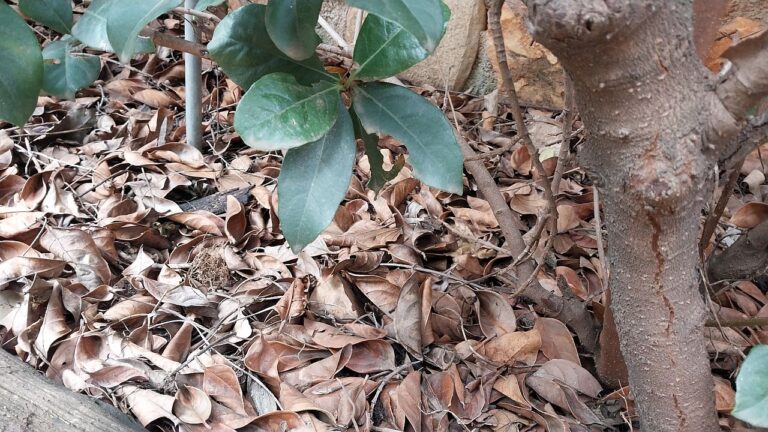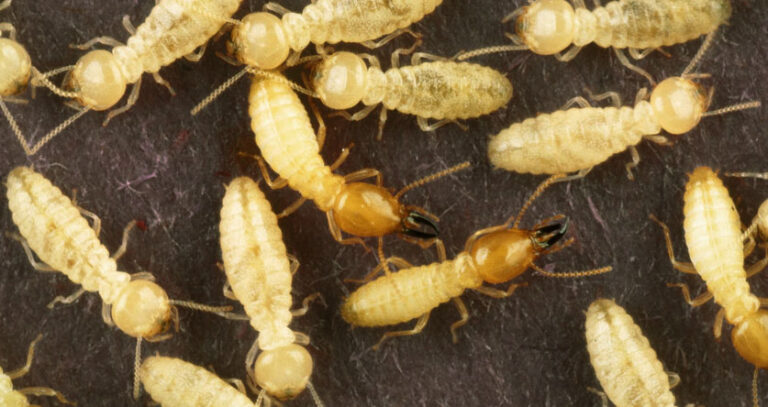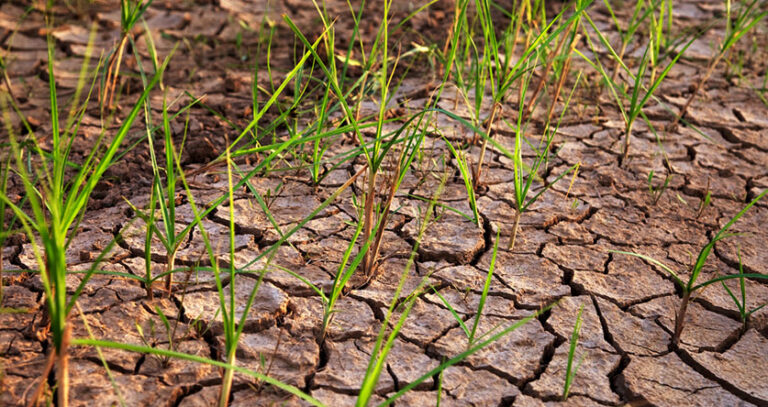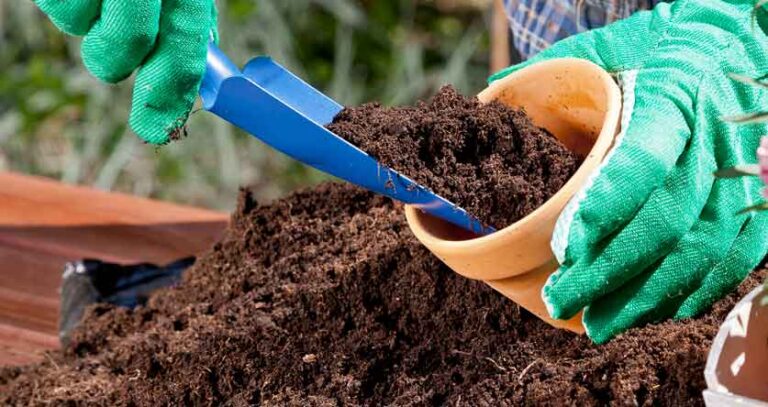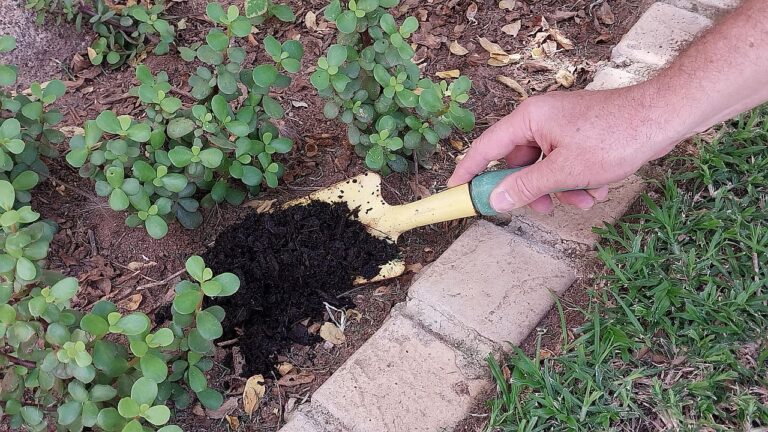Plants for Clay Soil with Poor Drainage (10 Best Options!)
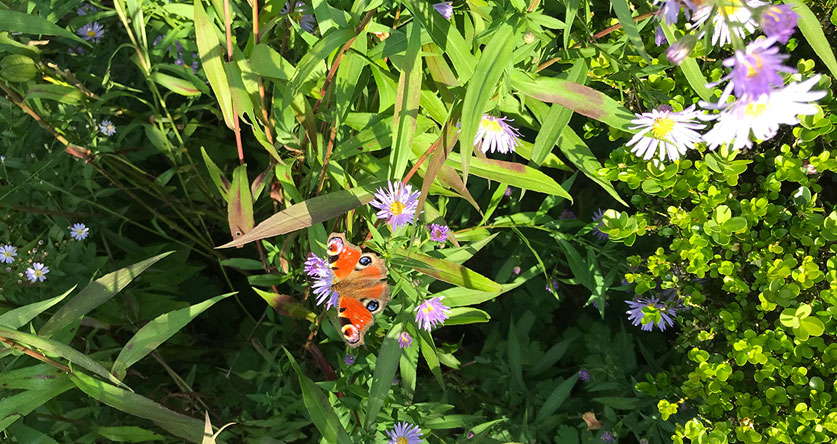
After moving into my new home, I quickly learned that not all gardeners are blessed with a yard filled with rich, well-draining, loamy soil!
My new garden had thick, sticky, compact, waterlogged clay soil, which meant re-planning my entire garden layout.
Choosing plants that thrive in clay soil may need some discretion, but creating a beautiful garden in clay isn’t as limiting as you may have been told 🙂
Keep reading to learn more…
After some trial and error in my home garden, I can confidently provide the best plants for clay soil with poor drainage to ensure you have a vibrant, lively garden.
What Plants for Clay Soil with Poor Drainage?
The best plants for clay soil with poor drainage are hardy plants with robust root systems that tolerate extended periods of soggy, water-logged soil. Also, their strong roots penetrate the tight clay particles. Some of the top choices include asters, hostas, black-eyed Susans, daylilies, blazing stars, Bergenia, New York ironweed, and more.
Clay soil can be problematic if you’re trying to grow a beautiful flower garden with sensitive annuals or perennials. Clay soil is comprised of tiny mineral particles that stick tightly together and only a small amount of organic matter. This results in sticky, compacted soil with poor drainage due to the limited space between the particles.
Most plants do not have strong enough roots to push their way through the dense clay. The roots can also suffer from reduced aeration and too much moisture, leading to root rot.
So you’ll need to invest in plants that cope well with extremes, from soggy soil to dry, cracked conditions. For example:
- Gardeners with a sunny location can plant asters, daylilies, and blazing stars.
- Gardeners with a shady garden should consider planting hostas, bergenia, and daylilies.
Can Plants Grow in Clay Soil?
Despite clay soil’s lousy reputation for growing plants due to the limited movement for root growth, it also boasts some advantages, including:
- Good nutrient density: The clay soil particles bind to nutrients and minerals like calcium, magnesium, and potassium that supplement plants and help them grow.
- Drought tolerance: Clay retains a ton of moisture, making it exceptionally drought-tolerant and providing ample water to draw from throughout the season.
So, while it’s best not to plant plants that need well-draining soil in clay, plenty of plants happily grow in the nutrient-rich and moisture-retentive environment clay provides.
What Kind of Plants Like Wet Clay Soil?
Hardy plants that tolerate extreme conditions like prolonged periods of water-logging, cold ground temperatures, and dry, cracked earth conditions are ideal for clay soils with poor drainage.
Often, plants with taproots, like hostas, daylilies, and asters, also grow well in clay soil. Their strong roots penetrate the clay, ensuring sufficient moisture exposure and even helping break up some of the tough, compacted clay particles.
Best Plants for Clay Soil with Poor Drainage
To improve its structure, you can always amend your clay soil by adding organic matter like bark, shredded leaves, composting materials, and manure.
As you know, I’m a fan of composting, and I would encourage you to improve your soil this way 🙂 However, I understand improving your soil takes time and requires ongoing maintenance. So, if you want to get planting immediately, take a look at my top ten plant recommendations below:
Note: Ensure the plants are planted according to their sunlight or shade preferences to ensure they thrive. Hang in there; your garden will be transformed into a masterpiece.
1. Asters
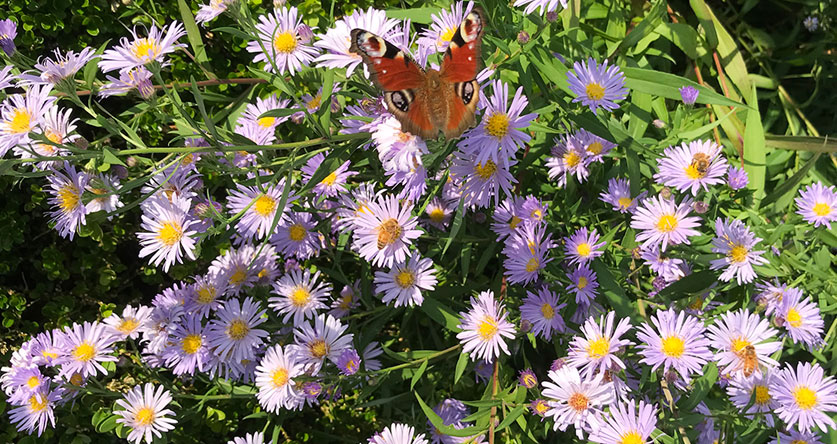
Asters are cold-hardy, long-lived perennials that enliven gardens during late summer and early fall with daisy-like flowers in white, purple, or blue hues.
Asters prefer slightly acidic loamy soil but tolerate moist clay soil well. However, make sure you plant these cheerful flowers in full sun to ensure maximum blooms.
2. Hostas
Hostas are hardy perennials adored for their attractive foliage in a head-spinning array of sizes, colors, textures, and variegations.
Hostas prefer rich, well-draining soil but are forgiving to a range of conditions, including poorly drained compact ground. They require no special attention as long as you plant them in a garden that doesn’t receive too much sun. Hostas prefer partial or dappled sunlight.
3. Black-Eyed Susans

Black-eyed are adaptable, low-maintenance flowers that create a blanket of golden-yellow, daisy-like blooms from June to August. They are the perfect addition to perennial borders, prairies, or cottage gardens.
Black-eyed Susans are tough-as-nails, tolerating a wide range of soil types. However, these plants are sun worshipers and must be planted in full sun to ensure vigorous growth.
4. Daylilies
Daylilies are adaptable, vigorous perennials that add color and texture to your garden for many years with little to no care. The plant’s botanical name, Hemerocallis, is derived from the Greek, meaning ‘day and beauty.’ While each flower only adorned us with its beauty for a day, each scape boasts up to 15 buds, creating the appearance of continuous blooms.
Daylilies adapt well to various soil conditions and generally thrive in clay. They aren’t fussy about light conditions, are drought-resistant and pest-free, and survive cold winters with little injury.
5. Blazing Stars
Blazing stars are perennials that make an eye-catching addition to prairie gardens, cottage gardens, and border beds. These prairie flowers produce clusters of spiky bottle-brush blooms atop tall wands for weeks on end. You can expect the colorful plumes to be constantly abuzz with pollinators.
Blazing stars’ are resilient sun lovers and grow well in various kinds of harsh conditions, including wet clay soil. However, it doesn’t enjoy being stuck in water-logged mud over the winter.
6. Bergenia

The bergenia is a clump-forming perennial beloved for its evergreen foliage and vigorous nature. Its amusing name, pipsqueak, alludes to the sound its glossy foliage makes when rubbed together. During springtime, dense pink inflorescences arise atop the bergenia’s heart-shaped, leathery leaves.
Bergenia plants look best when planted in mass plantings in full or partial shade. They are tolerant to a wide variety of substrates. However, I find they really thrive after enriching the clay soil with a top dressing of compost.
7. New York Ironweed
New York Ironweed is a splendid, robust, towering perennial wildflower that boasts upright, sturdy stems adorned with lance-shaped leaves and deep purple composite flowers from late summer into early fall.
Ironweed is hardy and extremely easy to grow. These large plants adapt to all soil types except extremely barren, dry soil. So, they are perfect candidates for your boggy, poorly draining clay!.
8. Baptisia (False Indigo)
Baptisia, also known as false indigo, is a clumping perennial with a long season of interest. The plant bears spikes of indigo-blue pea-shaped flowers in spring. The flower racemes are followed by deep black pods that persist from fall through winter.
False indigo flowers thrive in clay soils as long as they have exposure to at least six hours of bright sunlight.
9. Fountain Grass
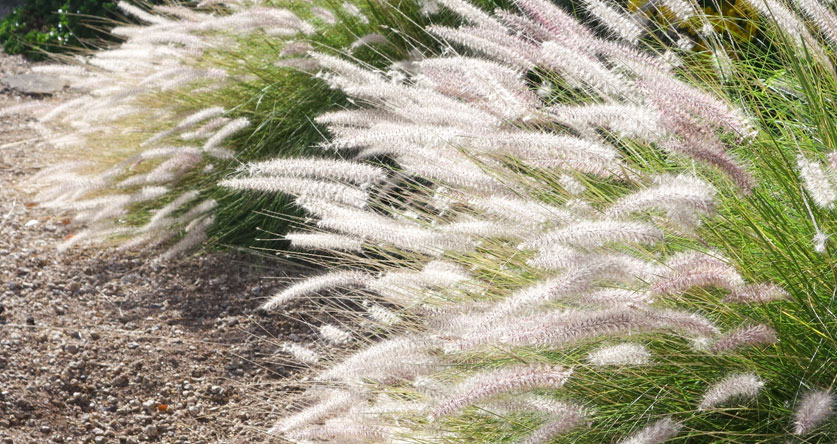
Most ornamental grass tolerates clay soil and provides year-round interest to your landscape with its unique textures – my favorite is fountain grass. Fountain grass is among the most beautiful and elegant grasses, boasting fluffy, feathery panicles atop linear leaves.
Although fountain grass prefers loamy soil, it also grows well in clay. Feather grass can withstand harsh growing conditions like excessively wet and compact soil and cold temperatures.
10. Cup Plant
The Silphium or cup plant is a sunflower-like perennial known for its coarse leaves and attractive, yellow blooms. Cup plants are commonly found in prairies, meadows, low woods, and along streams.
The cup plant is a hardy, low-maintenance plant that thrives in various soil and temperature conditions. It best tolerates medium-to-wet soil rich in clay.
Read this next for advice on how to break up clay soil...
Good luck!


